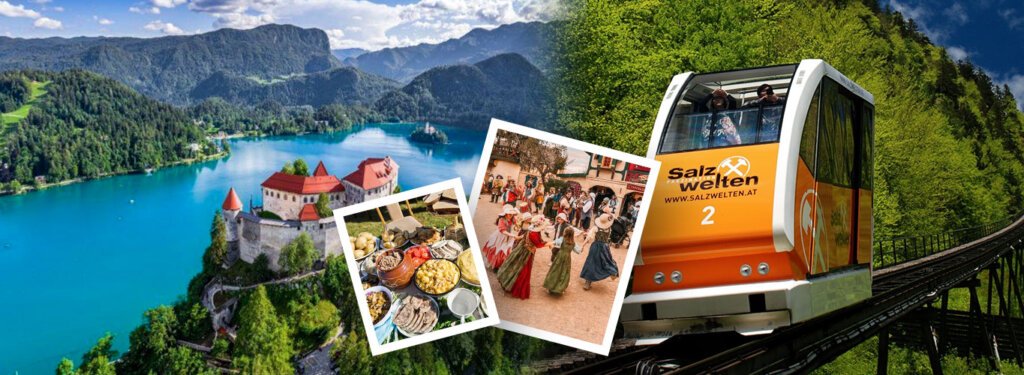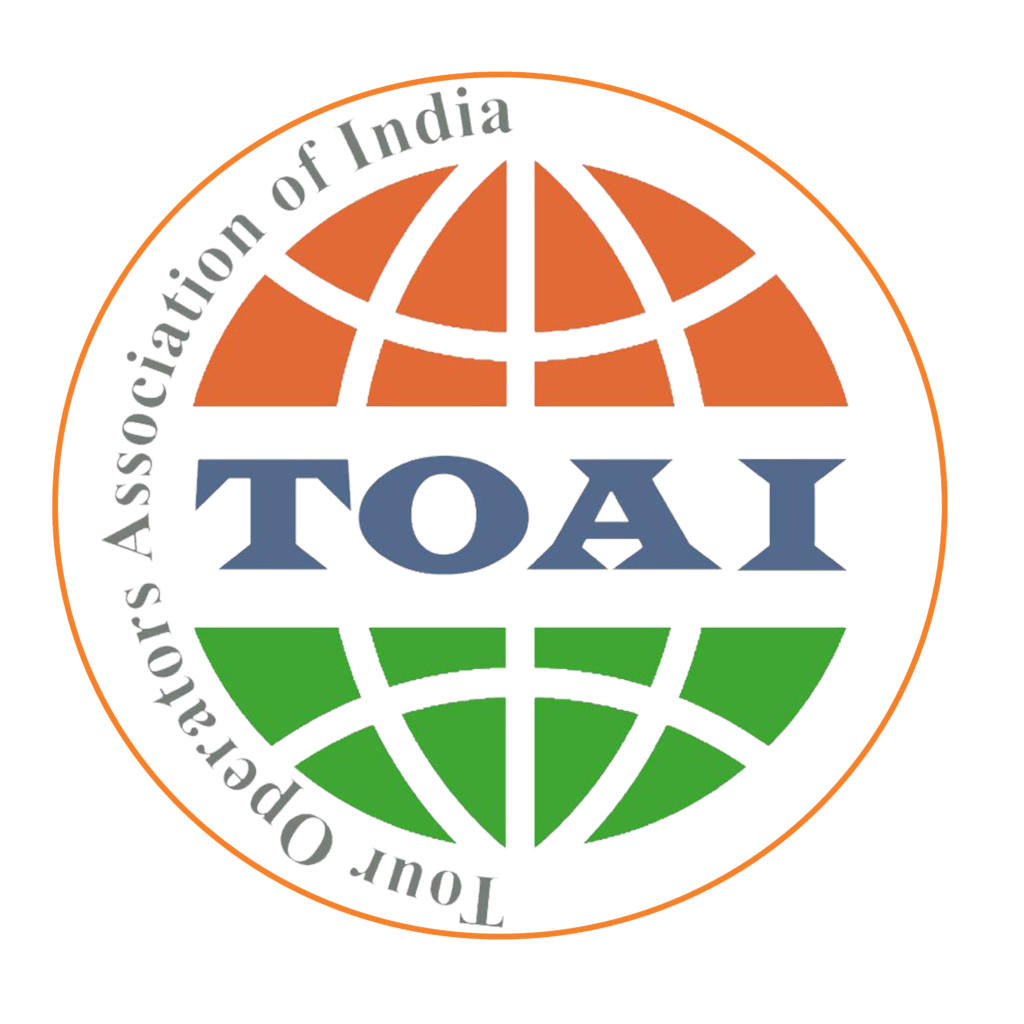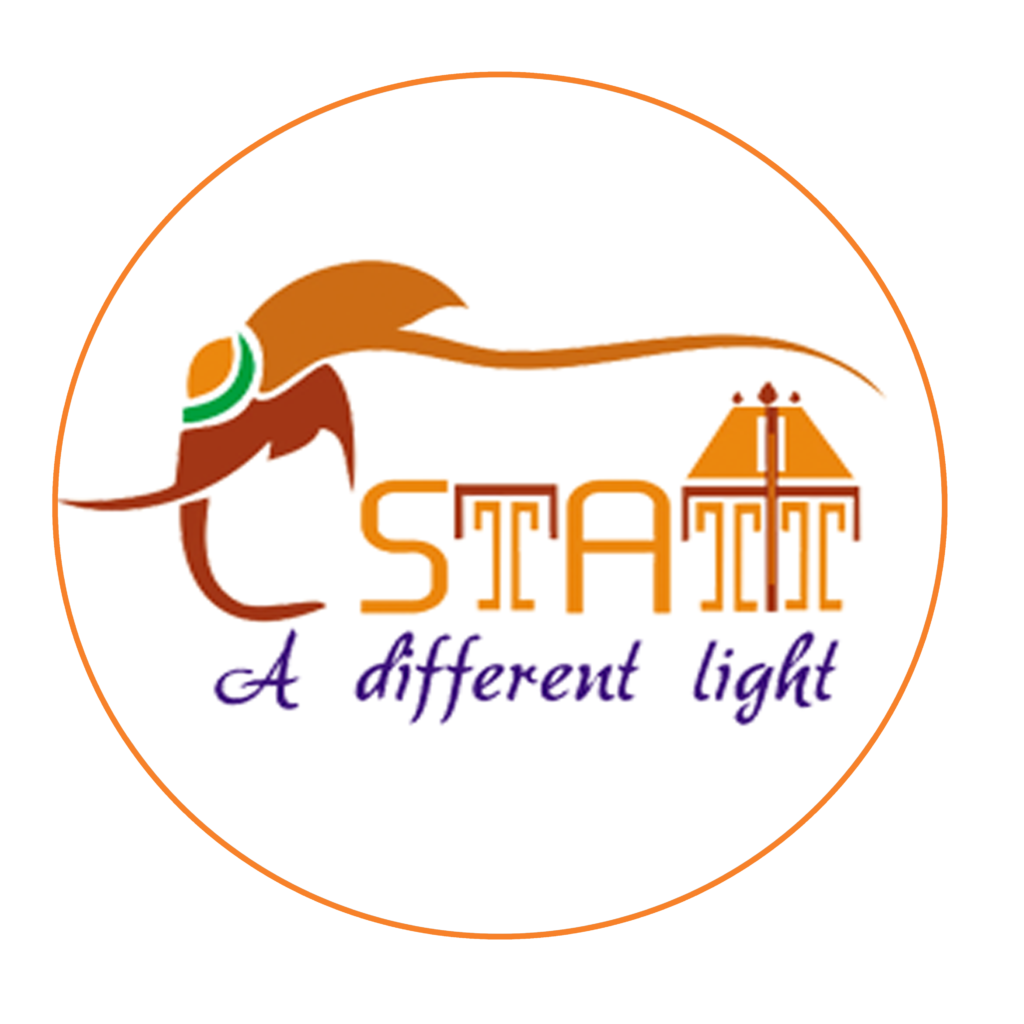
South India's No. 1 Travel Agency ✨
💱 Currency
Multiple currencies used:
Euro (Slovakia, Slovenia, Estonia, Latvia, Lithuania)
Polish Zloty (PLN)
🗣️ Languages
Each country has its own official language (Polish, Hungarian, Romanian, etc.)
🌤️ Climate
-5°C to 30°C (varies by season and country; winters are cold, summers are warm and pleasant)
📅 Best Season
April – June (Spring)
September – October (Autumn)
🛡 Must-Know Travel Tips for Visiting Eastern Europe
- 🏧 ATMs are common in cities; carry some cash for rural areas and markets. Use official bank ATMs.
- 💳 Cards are widely accepted in urban areas, but cash is preferred in villages and local shops.
- 🏦 Banks operate Mon–Fri (9 AM–4 PM); ATMs work 24/7 but may charge foreign card fees.
- 🍷 Drinking age is 18. Alcohol is easily available; try local wines and spirits.
- 🤝 Dress modestly at religious or rural sites. Polite greetings are appreciated.
- 💰 Bargaining is rare in stores but common at flea markets—always ask first.
What Is Eastern Europe Famous For? – About Eastern Europe Explained
Spanning from the Baltic Sea to the Black Sea, Eastern Europe is a region steeped in rich cultural traditions and centuries of complex history.It includes countries such as Poland, Hungary, Romania, Bulgaria, Czech Republic, Slovakia, and the Baltic states like Latvia and Lithuania, among others. The region is renowned for its fairy-tale castles, medieval towns, orthodox cathedrals, vibrant folk traditions, and diverse landscapes that range from the Carpathian Mountains to the Danube River Basin.
Eastern Europe stands out for its genuine charm and untouched cultural essence.Unlike Western Europe, it is often less commercialized, offering travelers a raw, immersive experience. Visitors are captivated by the baroque architecture in Prague, the Ottoman influences in Bosnia, and communist-era relics in Albania and Bulgaria, all coexisting harmoniously with lively modern cities. Don’t miss the charming Old Towns of Krakow, Tallinn, and Vilnius, the famous thermal baths of Budapest, Romania’s colorful painted monasteries, or a breathtaking drive along the Transfăgărășan Highway on the heart of the Carpathians.traditional wooden churches found in Slovakia and Ukraine.
Many Eastern Europe tour packages focus on these iconic sites, ensuring that travelers experience the perfect mix of history, nature, and cultural immersion in a single Eastern Europe tour plan.
Eastern Europe Tour Packages
Most Chosen Eastern Europe Plans by Our Happy Customers
How Are India and Eastern Europe Connected? – Cultural & Historical Ties
India’s connection with Eastern Europe goes back decades, rooted in academic, cultural, and diplomatic relationships. During the Cold War era, India maintained strong ties with the Eastern Bloc, including the former Soviet Union and socialist republics across the region. Many Indian students pursued engineering and medical degrees in countries like Poland, Russia, and Hungary under scholarship and exchange programs. These alumni often became cultural bridges, fostering long-term ties between both regions.
Culturally, Indian films, classical dance, and cuisine have found an appreciative audience in Eastern Europe. Indian cinema holds widespread appeal in Serbia, Romania, and the Czech Republic, where Bollywood-themed festivals and cultural events are frequently organized. Yoga, Ayurveda, and Indian classical music also enjoy recognition in parts of Eastern Europe, with many wellness retreats and cultural centers promoting Indian traditions. Several Eastern European universities now offer courses in Indology and Hindi, further strengthening intellectual collaboration.
Over the years, joint ventures in education, tourism, and IT services have further solidified these ties. Business partnerships are growing, especially in the pharmaceutical, automotive, and tech sectors. For Indian travelers today, the region offers a welcoming blend of affordability, accessibility, and cultural openness. Vegetarian cuisine is relatively accessible, and Indian visitors often note the warmth and hospitality of locals. With the rise of customized Eastern Europe tour packages, more Indian tourists are exploring these destinations for their honeymoon, heritage tours, and offbeat adventures. From historic towns and UNESCO sites to serene countryside and vibrant street culture, Eastern Europe continues to rise as a favored region for Indian globetrotters.
Interesting Things to Know About Eastern Europe Before You Go
Eastern Europe is a land of fascinating contrasts and vibrant traditions. Each country has its own language, and while English is commonly spoken in cities and tourist centers, learning a few local phrases is always appreciated by locals and can enhance your interactions. Even simple phrases in Polish, Hungarian, or Romanian are often warmly received and help create a friendly connection with locals. Currency can vary from country to country—Poland uses the Zloty, Hungary the Forint, Romania the Leu, while countries like Slovakia, Slovenia, and the Baltic states use the Euro. Travelers are advised to carry small denominations of local currency, especially when shopping at markets or dining in smaller towns.
Public transportation is well-developed and affordable, with scenic train rides and budget-friendly bus services making cross-border travel easy and efficient. Apps like Omio and Rome2Rio can help with planning routes and schedules. Intra-city travel is also smooth, thanks to metros, trams, and ride-hailing services like Bolt and Uber in most major cities. Tap water is generally safe to drink in most places, especially in cities like Budapest, Warsaw, and Bratislava, though bottled water is widely available for those with sensitive stomachs.
Tipping is customary in restaurants, with a 10% tip usually being appropriate unless a service charge is already included. In cafés and taxis, rounding up the bill is generally acceptable. While casual wear is widely accepted, modest clothing is advised when visiting churches, monasteries, and rural areas. Pack layers to adapt to unpredictable weather—spring and autumn can vary greatly in temperature between day and night. Many Eastern Europe tour packages include cultural etiquette briefings and travel tips, ensuring visitors feel prepared and respectful during their stay. Travelers will also benefit from carrying a universal power adapter and having travel insurance that covers medical emergencies and trip delays.
What to Know Before Booking an Eastern Europe Tour Package
Booking a tour package to Eastern Europe can be an excellent way to explore multiple countries and cultures efficiently. Some nations are part of the Schengen Zone, such as Hungary and Slovakia, while others like Serbia and Albania are not. It’s essential to plan your itinerary based on visa requirements and travel logistics.
Multi-country itineraries are common, often covering three to six countries over ten to fifteen days. Popular circuits include Prague–Vienna–Budapest, or Balkan adventures across Croatia, Montenegro, and Bosnia. Depending on your preference, you can choose from group tours, private guided tours, or even self-guided travel packages. Rail passes and low-cost airlines are also viable options for budget-conscious travelers.
When researching Eastern Europe tour packages, make sure to check for inclusions such as airport transfers, hotel ratings, local guides, and cultural activities. Creating a thoughtful Eastern Europe tour plan in advance allows travelers to make the most of their time while enjoying seamless travel across borders.
The region’s climate varies significantly across seasons. Summer is warm and lively, while winter brings freezing temperatures and festive charm. Indian travel operators often offer packages with Hindi-speaking guides and Jain/vegetarian meal options, making the experience smooth and personalized for Indian tourists.
Which Are the Best Budget Eastern Europe Tour Packages?
For Indian travelers seeking great value, Eastern Europe offers plenty of budget-friendly travel opportunities without compromising on experience. One of the most popular and affordable circuits is the Prague–Vienna–Budapest route, usually lasting eight to ten days. These Eastern Europe tour packages typically include guided city tours, Danube river cruises, entry to UNESCO sites, comfortable 3- or 4-star accommodations, and daily breakfast. It’s a great mix of imperial architecture, riverfront charm, and cultural diversity.
Another favorite is the Croatia and Balkans package, spanning ten to twelve days, which takes travelers through stunning destinations like Dubrovnik, Kotor, Mostar, and Plitvice Lakes National Park. There are also excellent combinations of Poland, Slovakia, and Hungary over nine days, ideal for exploring Krakow, Bratislava, and Budapest on a shoestring budget. Romania and Bulgaria also feature in many seven-day itineraries, focusing on Dracula’s Castle in Transylvania, the painted monasteries of Bucovina, Black Sea coastal cities, and Thracian heritage sites.
Several Indian tour operators now offer customized Eastern Europe tour packages with Hindi-speaking guides, Indian or Jain meal options, and pre-arranged SIM cards or local transport passes. Some packages also include unique experiences like folk dance performances, wine tastings, or thermal spa visits—enhancing the journey with cultural depth.
These Eastern Europe tour packages generally start from around ₹1.2 to ₹1.8 lakh per person, inclusive of round trip international flights, accommodation, airport transfers, selected meals, guided sightseeing, and internal transportation. Group discounts are often available, making it ideal for families, student tours, or honeymoon couples. Booking early and during off-season months—typically March to May or late September to November—can also yield attractive discounts, especially when fine-tuning your Eastern Europe tour plan to fit your specific budget and interests. With the right planning, this region becomes one of the best-value destinations for Indian travelers seeking a memorable yet economical European adventure.
Quick Facts About Eastern Europe – Geography, Wildlife & People
Eastern Europe features a diverse landscape, including flat lowlands, rolling hills, and towering ranges such as the Carpathians, Balkans, Tatras, and Dinaric Alps. The region is a paradise for nature lovers and adventure seekers, with landscapes that shift from alpine meadows and dense forests to serene lakes and fertile plains. Major rivers such as the Danube, Vistula, and Dniester define the region’s topography and support both agriculture and tourism. River cruises along the Danube are especially popular and often included in many Eastern Europe tour packages for their scenic beauty and cultural value.
The wildlife here is surprisingly diverse due to the varied terrain and preserved ecosystems.In countries such as Romania, Poland, and Slovakia, protected national parks and biosphere reserves preserve endangered wildlife like the European bison, brown bears, lynxes, wolves, and distinctive birds like the Dalmatian pelican and imperial eagle. The Danube Delta, a UNESCO-listed site in Romania, stands out as one of Europe’s top birdwatching locations, with tranquil boat tours through pristine wetland ecosystems. The people of Eastern Europe represent a vibrant tapestry of cultures and traditions. The region includes Slavic, Baltic, Balkan, and Roma populations, along with numerous ethnic minorities like Hungarians, Greeks, Albanians, and Turks. Religious diversity is also prominent—Eastern Orthodoxy, Roman Catholicism, Islam, Judaism, and Protestantism coexist across borders. From ornate Orthodox cathedrals in Serbia to wooden chapels in Slovakia and mosques in Bosnia, the region’s spiritual heritage is rich and interwoven with its history.
From the bustling cities to the quaint villages, you’ll encounter warm, proud people with a deep respect for their heritage, folklore, and hospitality. Visitors often get the chance to witness traditional festivals, folk dances, and artisanal craft demonstrations, especially when following a thoughtfully designed Eastern Europe tour plan that includes immersive cultural experiences. Many communities still preserve ancient customs, storytelling traditions, and culinary practices, offering an authentic connection to the soul of Eastern Europe.
Eastern Europe Tour Packages
| High Season | April to June (Spring) & September to October (Autumn) – Mild weather, fewer crowds, and vibrant festivals |
|---|---|
| Iconic Attractions | Prague Castle (Czech Republic), Old Town Krakow (Poland), Budapest Parliament (Hungary), Dracula’s Castle (Romania), Plitvice Lakes (Croatia) |
| Popular Activities | Exploring medieval towns, soaking in thermal spas, hiking in the Carpathians or Tatras, Danube river cruises, attending folk festivals, skiing in winter |
| Visa | Schengen Visa required for most countries (Hungary, Slovakia, Czechia, etc.) |
| National Animals |
Poland: White-tailed Eagle Romania: Lynx |
| National Flowers |
Hungary: Tulip Romania: Dog Rose |
| Famous Food | Pierogi (Poland), Goulash (Hungary), Sarmale (Romania), Banitsa (Bulgaria), Borscht (Ukraine) |
Top 10 Reasons Why Tourists Love Visiting Eastern Europe
Eastern Europe captivates travelers with its historical depth and vibrant spirit. Its cities are adorned with gothic, baroque, and medieval architecture, and the overall travel experience is much more affordable compared to Western Europe. Foodies delight in the region’s hearty dishes like goulash, pierogi, and baklava.
Folk traditions remain strong, with locals celebrating their heritage through music, costumes, and dances. Hungary and Slovakia are famous for their thermal spas, offering therapeutic relaxation year-round. Nature lovers enjoy unspoiled national parks and scenic mountain hikes. Cities like Prague, Belgrade, and Krakow are also known for their electrifying nightlife scenes.
Eastern Europe becomes magical in winter, with enchanting Christmas markets and ski resorts nestled in the mountains. The region is less crowded than more mainstream European destinations, and visitors often leave charmed by the friendly, proud locals who are eager to share their stories and culture.
When Is the Best Time to Visit Eastern Europe?
Eastern Europe is a destination that offers something unique every season, making it a year-round travel hotspot. Spring, from April to June, is perfect for sightseeing, with blooming flowers, mild temperatures, and fewer tourists. This is an excellent time to explore historic city centers like Krakow, Prague, and Riga while enjoying scenic parks and cherry blossoms in full bloom. It’s also a great season for river cruises on the Danube or Vltava.
Summer, from July to August, is the busiest travel season, with long daylight hours, open-air concerts, music festivals, and vibrant street life. Cities like Budapest host iconic events like the Sziget Festival, while the Adriatic coastlines of Croatia and Montenegro attract beach lovers with their crystal-clear waters and medieval towns. However, since it’s peak season, booking accommodations and Eastern Europe tour packages in advance is highly recommended.
Autumn, especially September and October, is ideal for scenic countryside drives, wine tasting, and harvest festivals. The fall foliage in the Carpathian Mountains and Transylvanian hills is breathtaking, and cultural events like Bucharest’s George Enescu Festival or Warsaw’s Jazz Jamboree bring the arts alive.
Winter has its own allure, particularly from November to March, when cities host enchanting Christmas markets in places like Tallinn, Vienna, and Bratislava. Snow-covered castles, cozy cafés, and holiday lights create a magical atmosphere. Ski resorts in the Carpathians, Tatras, and Balkan Alps come alive with seasonal sports like skiing, snowboarding, and snowshoeing. For those interested in festive travel, planning a winter Eastern Europe tour plan can include everything from spa getaways to thermal bath visits and folklore celebrations. If you’re looking to balance good weather with affordability, June and September are often the best months to visit—offering mild weather, fewer crowds, and better travel deals.
What Are the Best Things to Do in Eastern Europe?
Eastern Europe is a playground of history, nature, and adventure. In the Czech Republic, exploring Prague Castle and walking across the Charles Bridge offers a glimpse into medieval grandeur. In Budapest, a nighttime cruise on the Danube reveals the city’s architectural splendor. Montenegro’s coastline can be experienced through breathtaking train journeys and serene beaches.
Romania invites you to discover Bran Castle, famously linked to Dracula legends, while Estonia’s capital, Tallinn, is a gem of preserved medieval charm. Budapest’s thermal baths, especially Széchenyi Spa, are perfect for relaxation. Slovakia’s High Tatras and Bulgaria’s Rila Mountains offer excellent hiking opportunities.
In Poland, a visit to Auschwitz provides deep historical insight, while regional festivals in Serbia and Slovenia bring together music, dance, and wine. Across the region, ancient fortresses, cobbled streets, and grand cathedrals await the curious traveler.
What Food Is Eastern Europe Known For? – A Guide to Eastern Europe Cuisine
Eastern European cuisine is flavorful, comforting, and full of character. Hungarian food features spicy goulash, chimney cakes, and paprika-rich dishes. In Poland, pierogi dumplings and bigos hunter’s stew are beloved staples. Romania’s sarmale—cabbage rolls stuffed with meat and rice—and creamy mămăligă are popular comfort foods that reflect a rich peasant tradition. Czech cuisine offers roasted meats with dumplings and tangy sauerkraut, often paired with locally brewed pilsner.
Bulgaria is known for its fresh Shopska salad, often served with banitsa, a cheese-filled pastry baked until golden. In Ukraine, borscht and syrniki—sweet cheese pancakes—are traditional favorites passed down through generations. The Balkans bring unique flavor too: Serbia’s grilled ćevapi, Bosnia’s flaky burek, and Croatia’s seafood stews are all must-tries. Meanwhile, the Baltics offer hearty rye bread, smoked fish, and dairy-rich desserts like Lithuania’s šakotis tree cake.
Vegetarian travelers will find plenty of choices, especially in urban areas. Cities like Prague, Sofia, and Warsaw have a growing number of vegetarian restaurants and international food options, including Middle Eastern, Italian, and vegan cafés. Indian restaurants are also common in major cities, making it easy for Indian tourists to enjoy home-style meals abroad. Those following Jain or strictly vegetarian diets can request customized menus, especially when traveling through Eastern Europe tour packages that cater to Indian preferences. Food markets, bakeries, and street food stalls are also great places to explore local flavors while staying within a flexible itinerary offered by many Eastern Europe tour packages available today.
Eastern Europe Tour Packages
| Prague (Czech Republic) | Prague Castle, Charles Bridge, Old Town Square, Astronomical Clock, Vltava River Cruise |
|---|---|
| Budapest (Hungary) | Parliament Building, Fisherman’s Bastion, Buda Castle, Széchenyi Thermal Bath, Danube Night Cruise |
| Krakow & Warsaw (Poland) | Wawel Castle, Old Town Krakow, Auschwitz Memorial, Wilanów Palace, Warsaw Uprising Museum |
| Transylvania (Romania) | Bran Castle (Dracula’s Castle), Peleș Castle, Painted Monasteries, Carpathian Mountains, Transfăgărășan Highway |
| High Tatras & Bratislava (Slovakia) | Hiking Trails, Cable Cars, Alpine Lakes, Bratislava Castle, St. Martin’s Cathedral |
| Croatia Coast | Dubrovnik Walls, Diocletian’s Palace, Sea Organ, Island Hopping, Blue Cave Tour |
| Baltic Capitals | Tallinn Old Town, Riga Art Nouveau District, Hill of Crosses, Gediminas Tower, Amber Museums |
What Should Indian Travellers Know Before Visiting Eastern Europe?
Indian citizens usually need a Schengen visa to visit many Eastern European countries, but some, such as Serbia, Bosnia and Herzegovina, and Albania, offer visa-free or e-visa entry for Indian tourists for short stays. It’s advisable to carry multiple printed copies of hotel bookings, return tickets, and insurance for border checks.
Buying a local SIM card or using an eSIM ensures seamless connectivity. Budget travelers can rely on FlixBus or train passes to explore multiple cities. Indian food is widely available, and most cities have Indian grocery stores or restaurants.
Travelers should dress comfortably in layers to adjust to varying temperatures. When visiting churches, monasteries, or rural areas, modest clothing is appreciated. In larger cities, Euros may be accepted, but in rural areas and local markets, using the national currency is often necessary. Emergency services can be reached by dialing 112, and travelers should familiarize themselves with basic local etiquette such as greeting with a handshake, being punctual, and avoiding loud conversations in public transport.
Where to Shop in Eastern Europe – Best Markets & Souvenirs
Shopping in Eastern Europe is a delightful experience, especially for those who appreciate handcrafted goods, local artistry, and authentic souvenirs that reflect the region’s cultural diversity. Amber jewelry, especially from Lithuania and Latvia, is a regional specialty, crafted from fossilized resin into beautifully detailed accessories and ornaments. Romania charms visitors with intricately hand-painted Easter eggs and traditional ceramics, while Ukraine is famous for its colorful wooden nesting dolls (matryoshka), Pysanky eggs, and intricate embroidery.
Czechia is renowned for its Bohemian crystal glassware and garnet jewelry, often passed down as heirlooms. Hungary and Slovakia impress shoppers with beautifully embroidered textiles, lacework, and handwoven linens. Bulgaria’s rose oil products, produced in the famous Rose Valley, are popular beauty items, while Serbia and North Macedonia are known for their artisan leather goods, handmade shoes, and copper crafts. Many travelers also collect traditional puppets, wooden toys, and painted icons as keepsakes from various regions.
Some of the best places to shop include Budapest’s Great Market Hall, Krakow’s Old Town Market, Sofia’s Central Market, and Bucharest’s Piata Obor. Tallinn’s Town Hall Square hosts seasonal markets, especially during Christmas, that are perfect for souvenirs, local snacks, and cultural memorabilia. Don’t miss Bratislava’s Main Square and the handicraft stalls in Sibiu, Romania, for authentic folk art. Flea markets and weekend bazaars in cities like Belgrade and Vilnius also offer vintage treasures, Soviet-era collectibles, and quirky local finds.
Prices are generally reasonable, and bargaining is accepted in some markets, especially in the Balkans. Many Eastern Europe tour packages include time for shopping in their itineraries, making it easy for travelers to explore local markets without missing key attractions. Carry some cash, as smaller vendors may not accept cards, and consider packing an extra foldable bag for all the beautiful, one-of-a-kind items you’ll bring home. Whether you’re looking for gifts, fashion, or traditional crafts, shopping in Eastern Europe adds color and character to any Eastern Europe tour plan.
How Is the Art and Culture Scene in Eastern Europe?
Eastern Europe boasts a thriving art and culture scene that blends folklore with contemporary expression. Opera and ballet performances are a must-see in cities like Budapest, Warsaw, and Bucharest, where historic theaters showcase classical and modern productions. Museums cover everything from fine art to wartime history, with notable ones including the Warsaw Uprising Museum and Prague’s Museum of Communism. For travelers designing an Eastern Europe tour plan, these cultural experiences offer enriching stops that add depth and meaning to the journey. Street art is increasingly popular in cities like Sofia, Belgrade, and Krakow, where murals and graffiti reflect urban creativity. Traditional craftsmanship remains vibrant, with artisans still practicing pottery, lace-making, wood carving, and icon painting. From jazz and cinema to traditional food and contemporary fashion, cultural festivals light up Eastern Europe throughout the year, including iconic events like the Sarajevo Film Festival, Krakow’s Jewish Culture Festival, and Tallinn Music Week.















